Split level homes have a unique architectural design that can sometimes pose a challenge when it comes to selecting the right siding. However, with a bit of creativity and the right materials, you can transform your home’s exterior into a stylish and cohesive facade. In this article, we will explore four creative split level siding ideas that will not only enhance your home’s curb appeal but also reflect your personal style.
Contrasting Color Palette
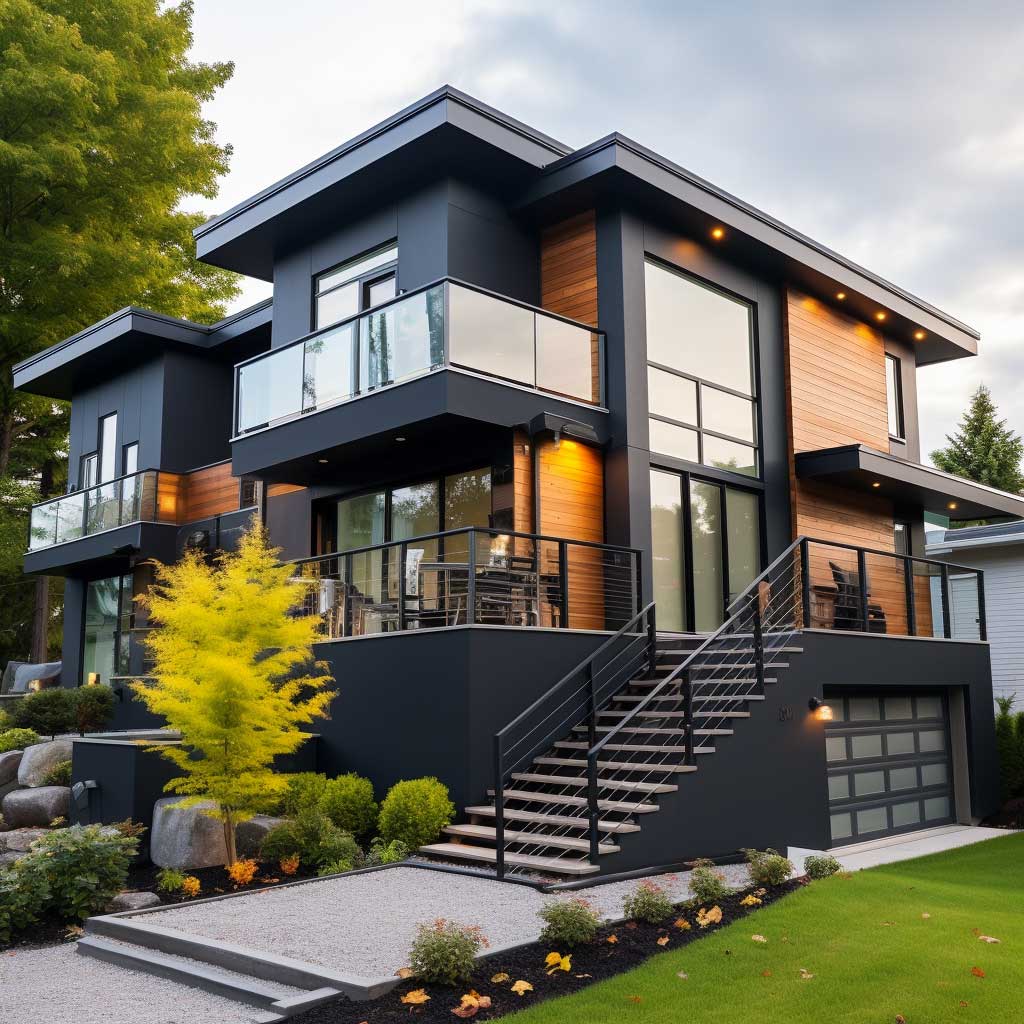


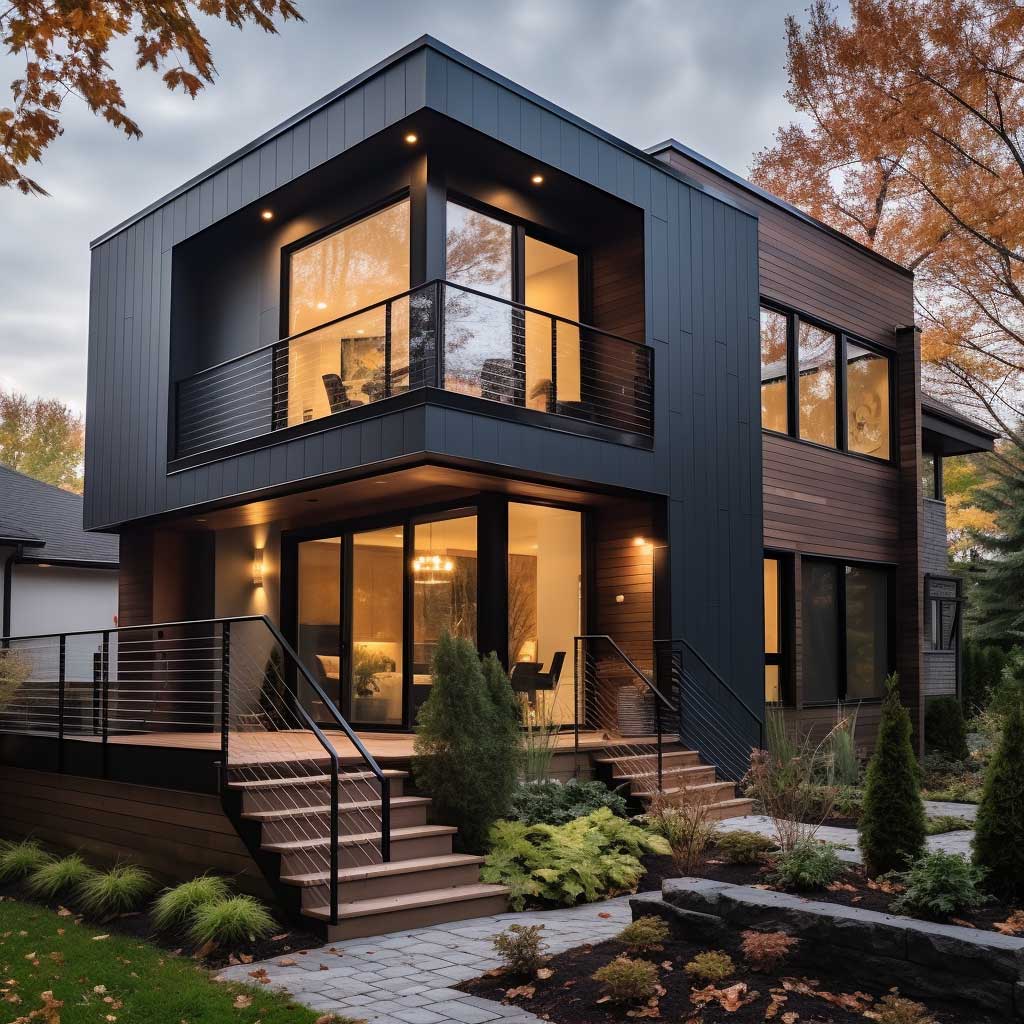
One of the most effective ways to enhance the curb appeal of your split level home is by selecting a contrasting color palette for the siding. A contrasting color palette involves using two or more colors that are distinctly different from each other, creating a visually interesting and dynamic facade. In this essay, we will explore the benefits of using a contrasting color palette for your split level siding, provide some tips for selecting the right colors, and discuss some split level siding ideas that incorporate a contrasting color palette.
Benefits of a Contrasting Color Palette
There are several benefits to using a contrasting color palette for your split level siding. First, a contrasting color palette can create visual interest and add depth and dimension to your home’s exterior. Split level homes often have a unique architectural design with multiple levels and rooflines. Using contrasting colors for the siding can help to highlight these architectural features and make your home stand out.
Second, a contrasting color palette can help to define the different levels of your home. Split level homes often have a main level, an upper level, and a lower level. Using different colors for the siding on each level can help to clearly define these spaces and create a cohesive and harmonious look.
Third, a contrasting color palette can add personality and character to your home. Your home’s exterior is the first thing that people see when they approach your property. Using contrasting colors for the siding can create a memorable and impactful first impression.
Tips for Selecting Contrasting Colors
When selecting contrasting colors for your split level siding, there are a few important considerations to keep in mind. First, consider the overall aesthetic of your home and your neighborhood. It is important to select colors that complement the architectural style of your home and the surrounding environment. For example, if your home is located in a wooded area, you may want to select earthy tones that complement the natural surroundings.
Second, consider the color of your roof, windows, and other exterior elements. It is important to select siding colors that complement these elements rather than clash with them. For example, if your roof is a dark color, you may want to select lighter colors for the siding to create a balanced and harmonious look.
Third, consider the amount of sunlight your home receives. Lighter colors tend to reflect sunlight, while darker colors tend to absorb it. If your home receives a lot of sunlight, you may want to select lighter colors for the siding to help keep your home cool. Conversely, if your home is in a shaded area, you may want to select darker colors for the siding to create a cozy and inviting atmosphere.
Split Level Siding Ideas with a Contrasting Color Palette
- Dark Upper Level and Light Lower Level: One popular split level siding idea is to use a dark color for the siding on the upper level and a light color for the siding on the lower level. This creates a visually interesting and dynamic facade that highlights the unique architectural features of your home. For example, you could use a dark grey or navy blue for the siding on the upper level and a light grey or beige for the siding on the lower level.
- Bold Accents: Another popular split level siding idea is to use a neutral color for the main siding and a bold accent color for the trim, doors, and other architectural features. This creates a cohesive and harmonious look with a pop of personality. For example, you could use a light beige or grey for the main siding and a bold red or blue for the trim and doors.
- Mixed Materials: Another creative split level siding idea is to use mixed materials for the siding. For example, you could use wood siding for the main level, stone siding for the lower level, and vinyl siding for the upper level. This creates a textured and layered look that adds depth and dimension to your home’s exterior.
In summary, using a contrasting color palette for your split level siding can create a visually interesting and dynamic facade that enhances the curb appeal of your home. Consider the overall aesthetic of your home and your neighborhood, the color of your roof and other exterior elements, and the amount of sunlight your home receives when selecting contrasting colors for your siding. With a bit of creativity and planning, you can create a beautiful and cohesive exterior for your split level home.
Mixed Material Magic
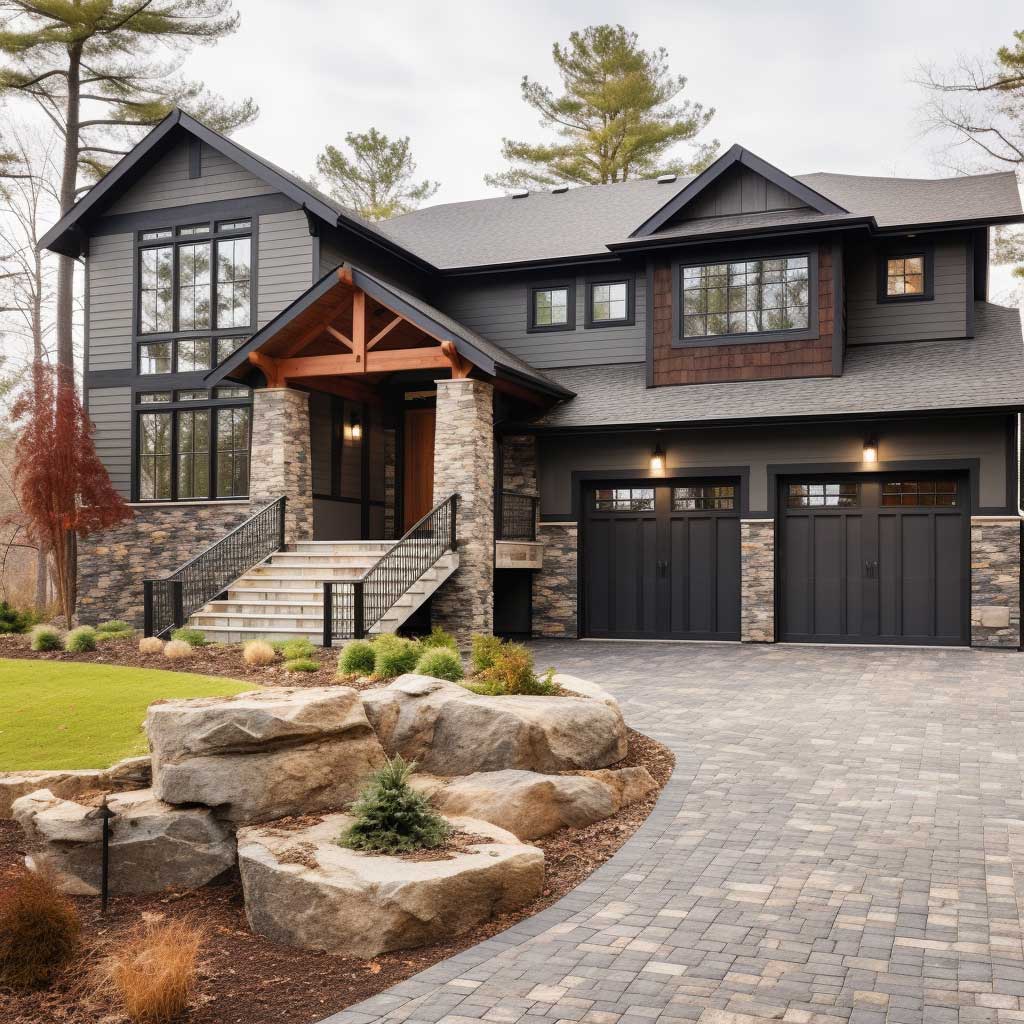
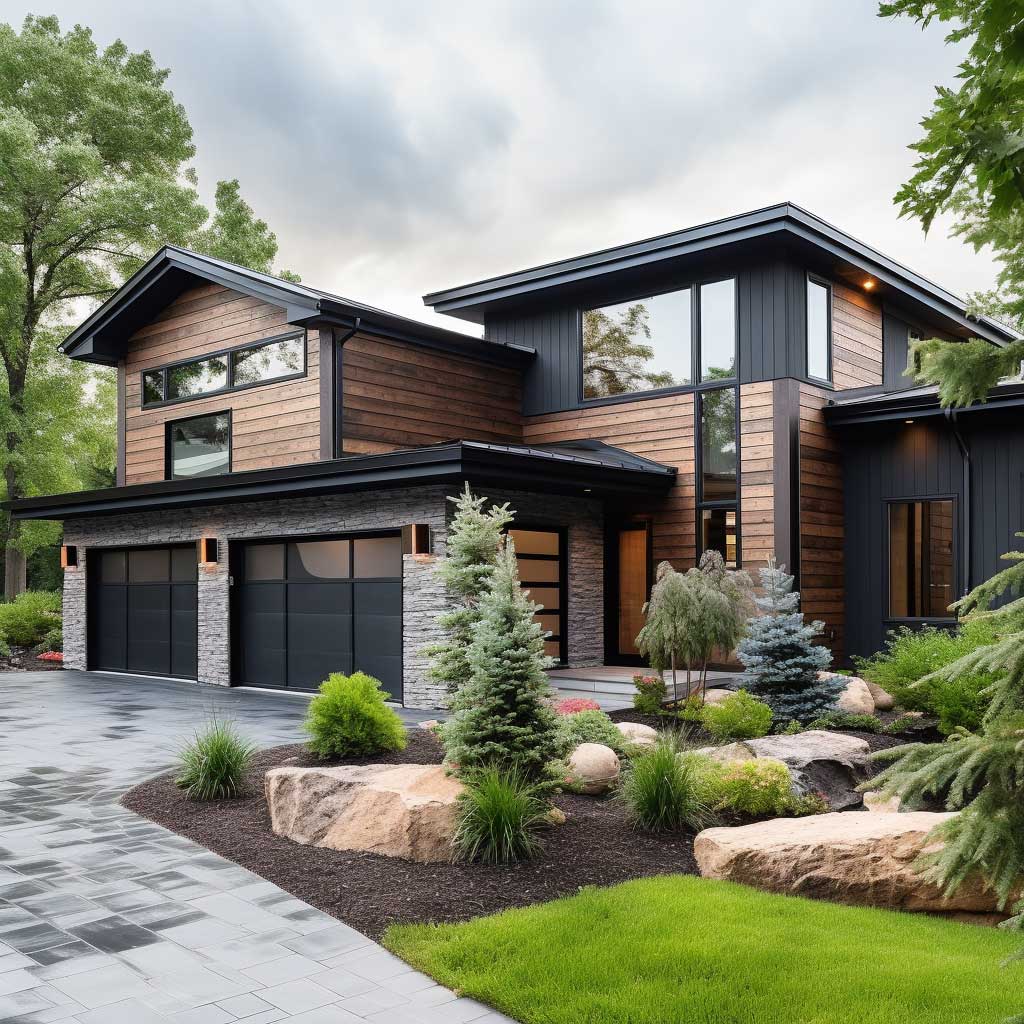
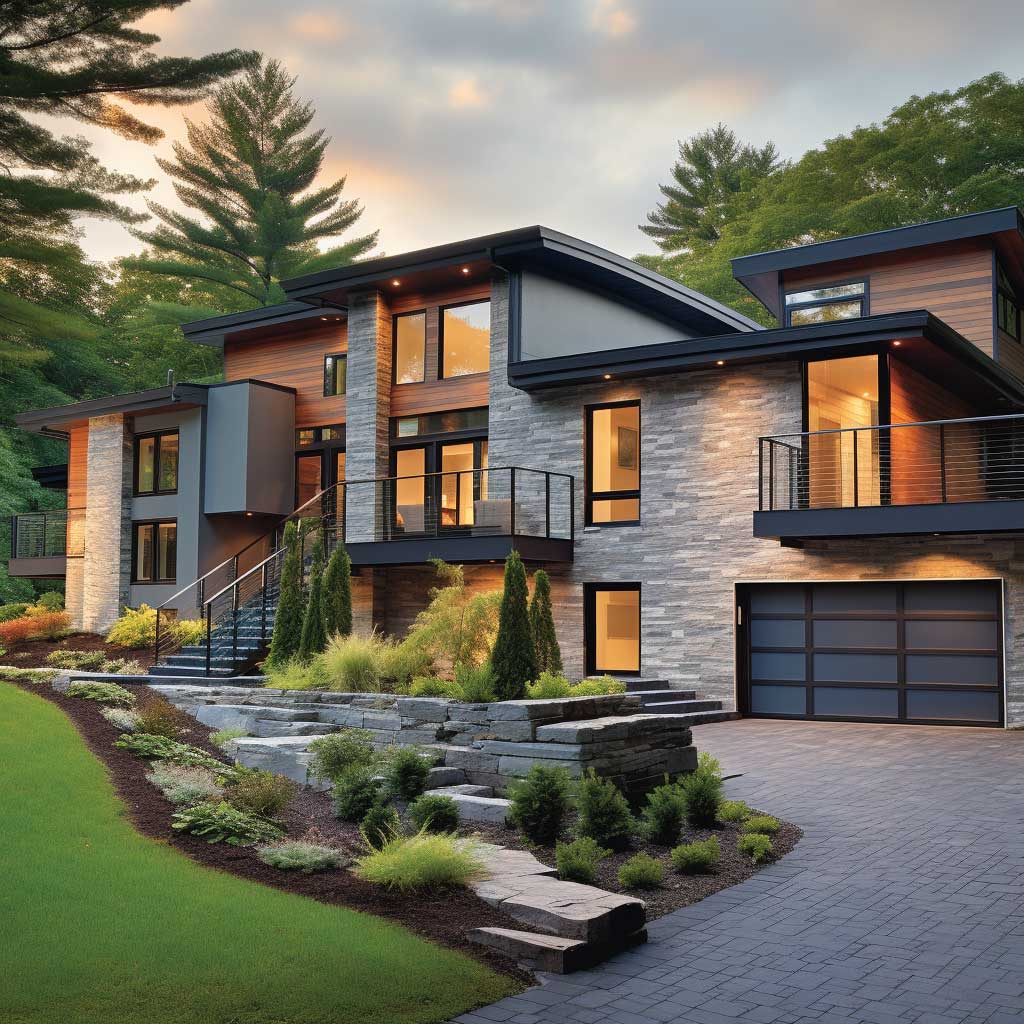
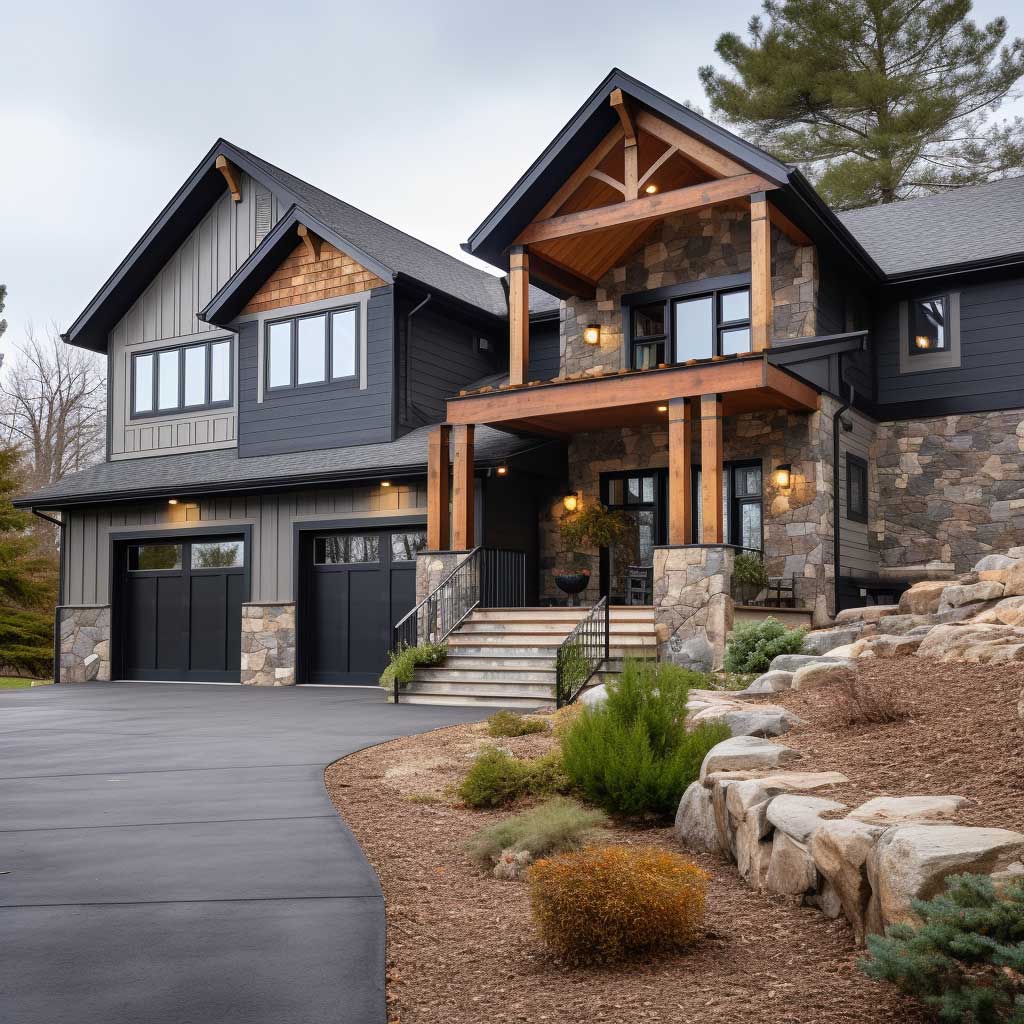
Split level homes, with their unique architectural design, offer a great opportunity to get creative with siding ideas. One innovative approach is to use a mix of different materials for the siding, creating a textured and layered look that adds depth and dimension to the home’s exterior. In this essay, we will explore the benefits of using mixed materials for your split level siding, provide some tips for selecting the right materials, and discuss some split level siding ideas that incorporate mixed materials.
Benefits of Mixed Materials
Using mixed materials for your split level siding has several benefits. First, it can create a visually interesting and dynamic facade. Split level homes often have multiple levels and rooflines, and using different materials for the siding on each level can help to highlight these architectural features and make your home stand out.
Second, mixed materials can add texture and depth to your home’s exterior. Different materials have different textures and finishes, and combining them can create a layered and textured look that adds character and personality to your home.
Third, mixed materials can create a cohesive and harmonious look. By selecting materials that complement each other and the overall aesthetic of your home, you can create a cohesive and harmonious facade that enhances the curb appeal of your home.
Tips for Selecting Mixed Materials
When selecting mixed materials for your split level siding, there are a few important considerations to keep in mind. First, consider the overall aesthetic of your home and your neighborhood. It is important to select materials that complement the architectural style of your home and the surrounding environment. For example, if your home is located in a wooded area, you may want to select natural materials like wood and stone that complement the natural surroundings.
Second, consider the maintenance requirements of each material. Different materials have different maintenance requirements, and it is important to select materials that you can maintain properly. For example, wood siding requires regular painting or staining to maintain its appearance, while vinyl siding requires less maintenance.
Third, consider the cost of each material. Different materials have different costs, and it is important to select materials that fit within your budget. Additionally, consider the long-term costs of each material, including maintenance and replacement costs.
Split Level Siding Ideas with Mixed Materials
- Wood and Stone: One popular split level siding idea is to use wood siding for the main level and stone siding for the lower level. This creates a natural and rustic look that complements the architectural design of split level homes. For example, you could use cedar wood siding for the main level and natural stone siding for the lower level.
- Vinyl and Brick: Another popular split level siding idea is to use vinyl siding for the main level and brick siding for the lower level. This creates a classic and timeless look that is also low maintenance. For example, you could use white vinyl siding for the main level and red brick siding for the lower level.
- Metal and Wood: Another creative split level siding idea is to use metal siding for the main level and wood siding for the upper and lower levels. This creates a modern and industrial look that is also durable and low maintenance. For example, you could use corrugated metal siding for the main level and cedar wood siding for the upper and lower levels.
In summary, using mixed materials for your split level siding can create a visually interesting and dynamic facade that enhances the curb appeal of your home. Consider the overall aesthetic of your home and your neighborhood, the maintenance requirements of each material, and the cost of each material when selecting mixed materials for your siding. With a bit of creativity and planning, you can create a beautiful and cohesive exterior for your split level home.
Modern Monochrome

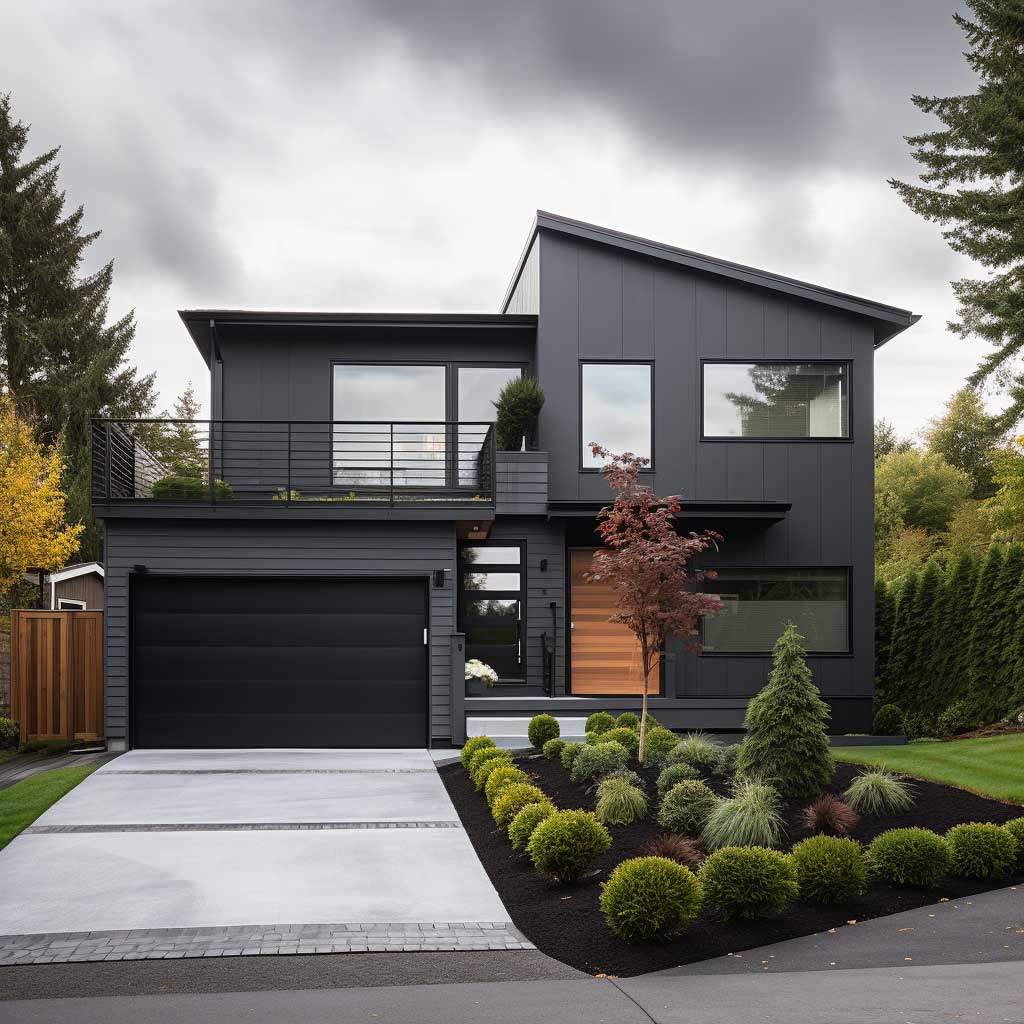
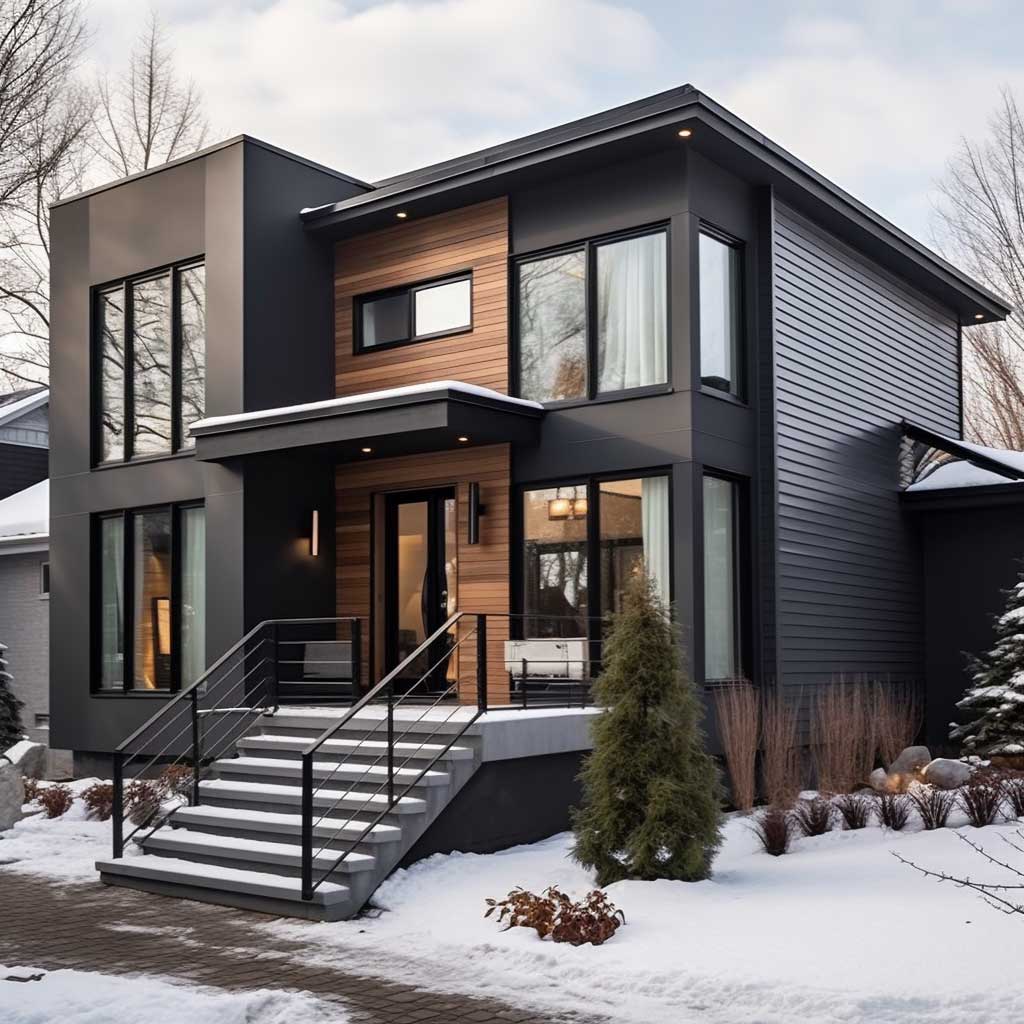

Monochromatic color schemes are a popular choice for modern home exteriors, and they can work exceptionally well for split level homes. A monochromatic color scheme involves using varying shades of a single color, creating a cohesive and harmonious look. In this essay, we will explore the benefits of using a modern monochrome color scheme for your split level siding, provide some tips for selecting the right shades, and discuss some split level siding ideas that incorporate a modern monochrome color palette.
Benefits of a Modern Monochrome Color Scheme
There are several benefits to using a modern monochrome color scheme for your split level siding. First, a monochrome color scheme can create a cohesive and harmonious look. By using varying shades of a single color, you can create a facade that is visually pleasing and well-coordinated.
Second, a monochrome color scheme can highlight the architectural features of your split level home. Split level homes often have multiple levels and rooflines, and using varying shades of a single color can help to define these spaces and create a sense of depth and dimension.
Third, a monochrome color scheme can create a sleek and modern aesthetic. Monochromatic color schemes are often associated with modern and minimalist design, and using a monochrome color scheme for your split level siding can create a contemporary and stylish facade.
Tips for Selecting Shades
When selecting shades for your modern monochrome color scheme, there are a few important considerations to keep in mind. First, consider the overall aesthetic of your home and your neighborhood. It is important to select shades that complement the architectural style of your home and the surrounding environment. For example, if your home is located in a wooded area, you may want to select shades of green or brown that complement the natural surroundings.
Second, consider the amount of sunlight your home receives. Lighter shades tend to reflect sunlight, while darker shades tend to absorb it. If your home receives a lot of sunlight, you may want to select lighter shades for your siding to help keep your home cool. Conversely, if your home is in a shaded area, you may want to select darker shades for your siding to create a cozy and inviting atmosphere.
Third, consider the color of your roof, windows, and other exterior elements. It is important to select shades that complement these elements rather than clash with them. For example, if your roof is a dark color, you may want to select lighter shades for your siding to create a balanced and harmonious look.
Split Level Siding Ideas with a Modern Monochrome Color Scheme
- Shades of Grey: One popular modern monochrome color scheme is to use varying shades of grey for your split level siding. For example, you could use a light grey for the main level, a medium grey for the upper level, and a dark grey for the lower level. This creates a sleek and modern aesthetic that is also neutral and versatile.
- Shades of Blue: Another popular modern monochrome color scheme is to use varying shades of blue for your split level siding. For example, you could use a light blue for the main level, a medium blue for the upper level, and a dark blue for the lower level. This creates a cool and calming aesthetic that is also contemporary and stylish.
- Shades of Green: Another creative modern monochrome color scheme is to use varying shades of green for your split level siding. For example, you could use a light green for the main level, a medium green for the upper level, and a dark green for the lower level. This creates a natural and organic aesthetic that is also modern and sophisticated.
In summary, using a modern monochrome color scheme for your split level siding can create a cohesive and harmonious facade that enhances the curb appeal of your home. Consider the overall aesthetic of your home and your neighborhood, the amount of sunlight your home receives, and the color of your roof and other exterior elements when selecting shades for your siding. With a bit of creativity and planning, you can create a beautiful and contemporary exterior for your split level home.
Bold and Bright Accents
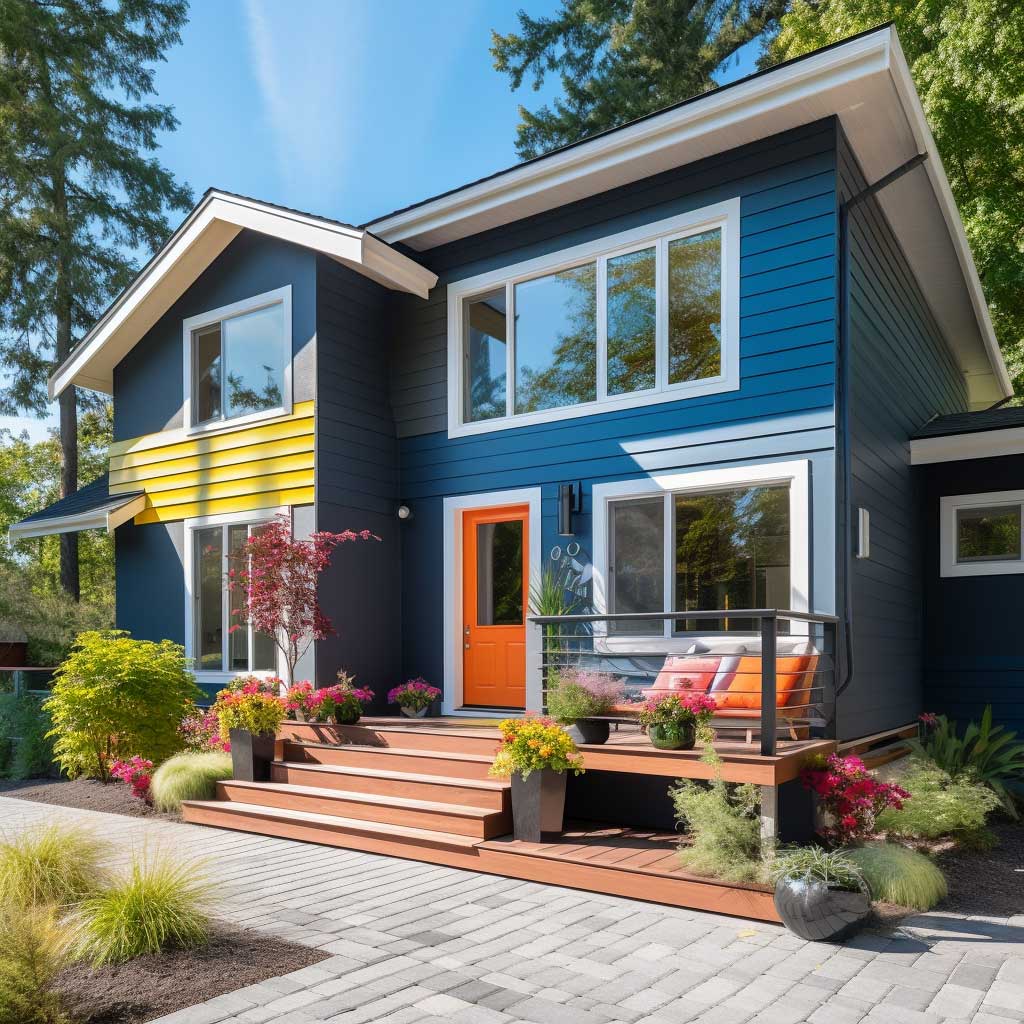

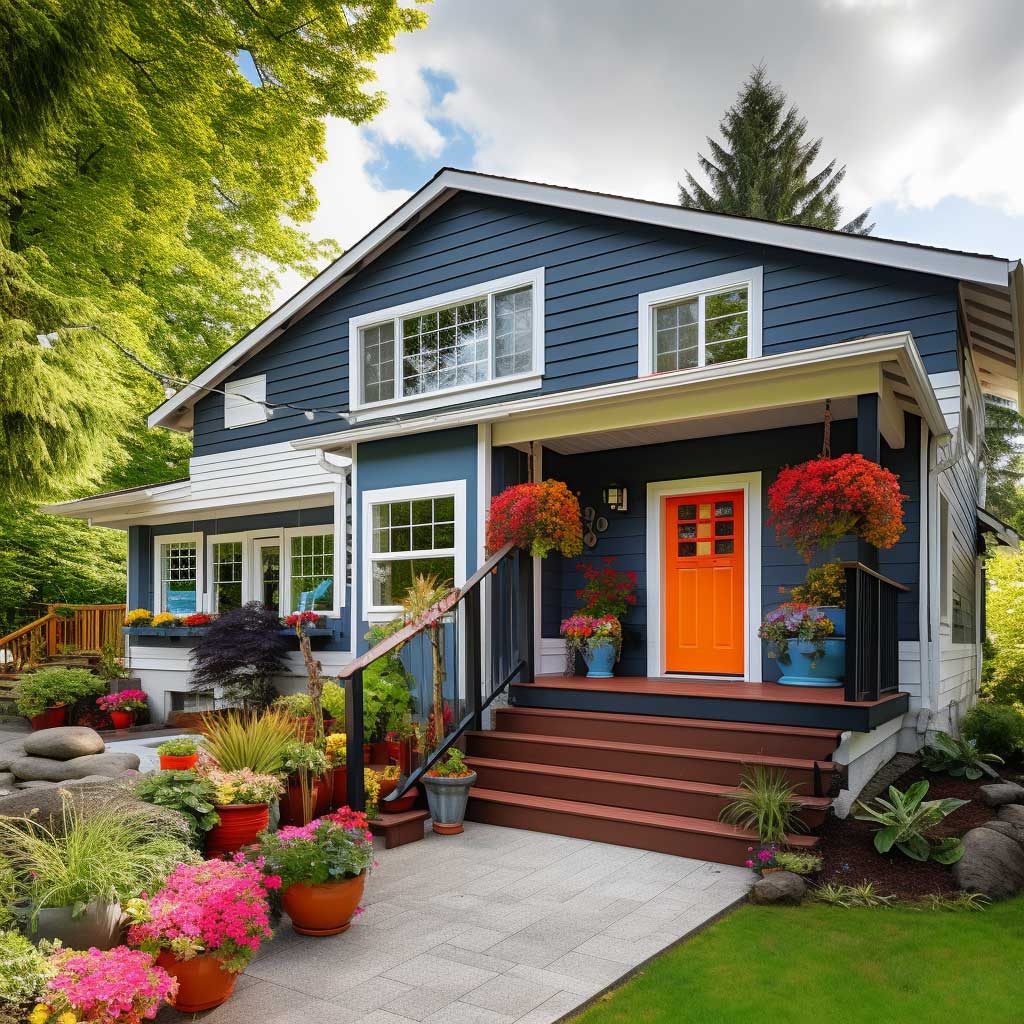
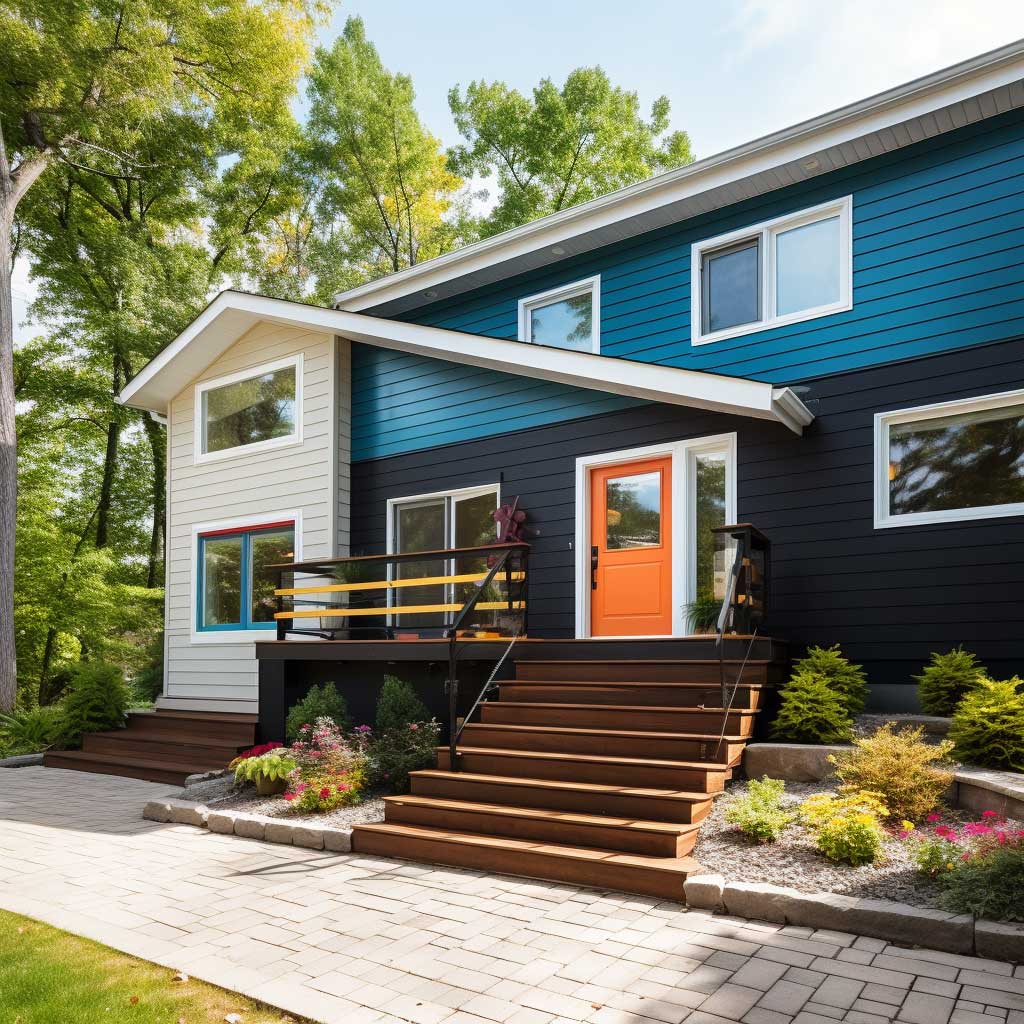
Split level homes, with their unique architectural design, offer a great opportunity to get creative with siding ideas. One way to add personality and character to your split level home is by incorporating bold and bright accents into your siding. In this essay, we will explore the benefits of using bold and bright accents for your split level siding, provide some tips for selecting the right accents, and discuss some split level siding ideas that incorporate bold and bright accents.
Benefits of Bold and Bright Accents
There are several benefits to using bold and bright accents for your split level siding. First, bold and bright accents can create visual interest and add personality to your home. Split level homes often have multiple levels and rooflines, and using bold and bright accents can help to highlight these architectural features and make your home stand out.
Second, bold and bright accents can create a cohesive and harmonious look. By selecting accents that complement the main siding color and the overall aesthetic of your home, you can create a cohesive and harmonious facade that enhances the curb appeal of your home.
Third, bold and bright accents can create a memorable and impactful first impression. Your home’s exterior is the first thing that people see when they approach your property, and using bold and bright accents can create a memorable and impactful first impression.
Tips for Selecting Bold and Bright Accents
When selecting bold and bright accents for your split level siding, there are a few important considerations to keep in mind. First, consider the overall aesthetic of your home and your neighborhood. It is important to select accents that complement the architectural style of your home and the surrounding environment. For example, if your home is located in a wooded area, you may want to select accents that complement the natural surroundings.
Second, consider the color of your main siding, roof, windows, and other exterior elements. It is important to select accents that complement these elements rather than clash with them. For example, if your main siding is a light color, you may want to select bold and bright accents that create a contrast and add visual interest.
Third, consider the amount of sunlight your home receives. Bold and bright accents can appear more vibrant in direct sunlight, so it is important to select accents that will look good in all lighting conditions.
Split Level Siding Ideas with Bold and Bright Accents
- Vibrant Front Door: One popular split level siding idea is to paint the front door a vibrant and bold color. This creates a focal point and adds personality to your home. For example, you could paint your front door a bold red or blue that complements the main siding color and creates a memorable and impactful first impression.
- Colorful Trim: Another popular split level siding idea is to paint the trim a bold and bright color. This creates a contrast with the main siding color and highlights the architectural features of your home. For example, you could paint the trim a bright white or a vibrant color that complements the main siding color and creates a cohesive and harmonious look.
- Bold Accents: Another creative split level siding idea is to incorporate bold and bright accents into the siding itself. For example, you could use a bold and bright color for the siding on the upper level or the lower level. This creates visual interest and adds personality to your home.
In summary, incorporating bold and bright accents into your split level siding can create a visually interesting and dynamic facade that enhances the curb appeal of your home. Consider the overall aesthetic of your home and your neighborhood, the color of your main siding, roof, windows, and other exterior elements, and the amount of sunlight your home receives when selecting bold and bright accents for your siding. With a bit of creativity and planning, you can create a beautiful and memorable exterior for your split level home.
Conclusion
Incorporating bold and bright accents into your split level siding can create a visually interesting and dynamic facade that enhances the curb appeal of your home. By carefully selecting accents that complement the overall aesthetic of your home and your neighborhood, the color of your main siding, roof, windows, and other exterior elements, and the amount of sunlight your home receives, you can create a cohesive and harmonious facade that is both beautiful and functional. With a bit of creativity and planning, you can create a beautiful and memorable exterior for your split level home that reflects your personal style and makes a memorable and impactful first impression.












